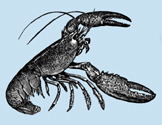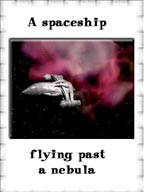![]()
Volume 2
Winter 2002

ESL Science

Learning ESL through Life Science Content.
This month, the Living Earth examines arthropods, animals with segmented bodies. You may know them better as beetles, spiders, and crabs. This article looks at the ways to compare and contrast arthropods.
Arthropods (web version)
Arthropods (print version)

Language Arts through Space Science

Other World's will be discontinued and replaced with a new column in the Spring of 2003.
The Language of Science - Patterns that are Useful for Scientific Writing.
This month's handout is on the ways to do things. We look at the lexical phrases associated with listing the ways to do things. In particular, we examine some ways to conserve wild bird habitat around the world. The lesson includes an introduction to habitats some vocabulary work and a teacher script for a listening exercise. The lesson ends with students writing paragraphs on the ways to do something.
Ways to Conserve Wild Bird Habitat Teacher's Script One Way to: Paragraph Writing
Language and Mathematics -The vocabulary needed to talk Math.
Math is the language of science. This section is for teaching the vocabulary needed to talk about mathematics. This month's handout is on an old riddle from medieval Europe: As I Was on My Way to St. Ives. This riddle is perfect for teaching the idea of 'each', an essential word for thinking mathematically. I have had elementary school students who can handle this with no problem and university students who couldn't. As an added activity, we've created a second riddle In the Bakery of St. Ives. After your finished, have your students make up riddles like At the Beach of St. Ives or In the Park of St. Ives.
Key language points:
Each:
Each Cat had 7 kits.
ESL Science (c) 2003 www.bogglesworldesl.com

